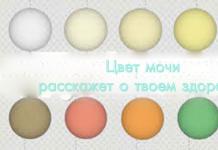The LED or LED lamp causes a lot of controversy among professionals. Some appreciated the speed and efficiency of its work, while others did not like the high price. Before choosing this device, it is useful to know its distinctive characteristics, advantages and disadvantages.
What is the difference between an LED lamp and a UV lamp?
Nail design technologies are constantly developing and improving. Just 10 years ago, fashionistas only dreamed of a manicure that would last for two weeks, without cracking or chipping. This became possible thanks to the gel coating. The difficulty of using it is that to harden the polymer you need a special lamp - UV or LED. They differ in some characteristics.
LED lamp for manicure
Features of UV lamps:
- work in a wide range, polymerize almost any coating;
- lamps in the device can be replaced;
- exposure time to the gel is up to 10 minutes;
- clients may experience an allergic reaction to radiation;
- inexpensive.
The main advantage of UV devices is their versatility of use, but at the same time they are heavy and energy-consuming.
The difference between LED devices:
- work in a very narrow radiation spectrum, polymerize only special compounds;
- the lamps are irreplaceable; if one is damaged, you will have to buy a new device;
- are much more expensive than UV analogues;
- very quickly, literally in a few seconds, they make the varnish hard;
- practically do not consume energy;
- light and compact;
- service life up to 50,000 hours;
- safe for health, do not cause allergies.
When choosing a device for permanent manicure, you need to take into account the features of its use and characteristics common to all types.
LED lamps for home or salon: which one to choose
The high cost, combined with energy savings and the speed of coating polymerization, makes this LED device attractive for professional use. Recently, inexpensive low-power devices suitable for individual use have appeared on the market.
When choosing an LED lamp, you need to take into account individual characteristics. Please pay attention to the following parameters:
- Power – the speed and quality of work depends on it. Manufacturers offer 9, 12, 45 watts. However, it is not advisable to buy the strongest lamp for your home; it is intended for professionals.
- Timer – it allows you not to miss time, because in such a device seconds are counted. But for individual use this function is not required.
- In professional lamps, LEDs and reflectors should be located both on top and on the sides - this enhances their effect.
- LED devices without a bottom or with a removable bottom are easy to use. Then they are easier to transport and use for pedicures.
The price of an LED manicure device depends on the combination of these characteristics and the quality of the materials themselves. You should not buy equipment that is too cheap; its quality will probably be worse.
With the help of an LED lamp for drying nails, the manicure procedure, which involves applying gel polish or shellac to the nails, is reduced significantly. The material, under the influence of the radiation emitted by LED bulbs, dries completely within ten to fifty seconds, whereas when drying in a classic UV lamp, this stage of the procedure takes from two to three minutes.
So, if you have the skill, you can complete a manicure with gel polish in half an hour, whereas when using an ultraviolet lamp, the procedure can take an hour.
LED lamps for drying nails are small devices in which hardening (polymerization) of gel polish, shellac, applied to nails, as well as the base layer and top coat occurs. The device is not suitable for acrylic, since the main component due to which the polymerization of this material occurs is acid, while gel polish hardens under the influence of ultraviolet rays of a certain wavelength.
Only a high-quality lamp can produce such a wave, so experts advise not to chase cheap products, but to purchase models from recognized brands, be sure to read reviews about them on websites. Low-quality devices are not able to provide a sufficient length of light beam for polymerization of the coating applied to the nail to occur, although they are capable of heating and slightly drying the shellac. Therefore, varnish fixed using such devices does not last long.
Like classic ultraviolet devices, shellac LED lamps are dried using ultraviolet radiation. But, while classic models operate using fluorescent lamps, new generation devices have LEDs installed. Among the advantages of LED devices is not only the ability to quickly dry the material applied to the nails, but also the fact that the rays do not cause burning of the nail.
But you need to work with such a lamp carefully, for example, if the primer, which is applied to the nail for better adhesion of the gel to the nail, accidentally ends up on the skin during drying, causes very painful sensations, and is difficult to remove (according to reviews, it does not go away for two days ).
 The advantage of an LED lamp is its durability (if we talk about a high-quality device). While the average lifespan of a fluorescent device is 3 thousand hours, an LED lamp can last 50 thousand hours, which is six years of continuous operation. Unlike UV lamps, LEDs do not lose radiation power over time, so there is no fear that the gel polish will not fully set and the shellac will be under-dried.
The advantage of an LED lamp is its durability (if we talk about a high-quality device). While the average lifespan of a fluorescent device is 3 thousand hours, an LED lamp can last 50 thousand hours, which is six years of continuous operation. Unlike UV lamps, LEDs do not lose radiation power over time, so there is no fear that the gel polish will not fully set and the shellac will be under-dried.
We cannot ignore the fact that LED devices in operating mode consume significantly less energy than fluorescent lamps, which allows you to save a considerable amount. For the same reason, the housing of LED devices does not heat up during operation. Another advantage of the LED device is that LEDs, unlike fluorescent lamps, do not contain mercury, therefore they are safe for the environment and do not require special disposal.
Disadvantages of the device
But LED devices also have disadvantages. Due to the fact that the wavelength of light that LED lamps emit differs from that of fluorescent devices, most LEDs can only work with those types of varnishes that were developed specifically for this device.
The fact is that classic devices emit light over a wider range than LED lamps. Accordingly, when drying nails in a UV lamp, any gel polish applied to nails finds “its wave,” while LED polishes have less capabilities. Therefore, before purchasing shellac, base or top coat, you need to make sure that it can be dried under LED bulbs. Otherwise, the varnish may not dry.
True, recently devices have appeared (for example, SIMEI Hybrid) that combine the characteristics of LED and fluorescent devices that can cope with any type of gel polish. They dry the material applied to the nails four times faster and are designed for 80 thousand hours of operation.

LED devices are much lower in price than fluorescent lamps: an LED lamp costs ten times more than its traditional counterpart. Experts recommend buying only high-quality models from well-known brands, since cheap ones do a poor job, and the time spent on polymerizing the coating takes the same amount of time as when drying with UV lamps, and it happens that shellac does not harden at all.
Lamp parameters
Lamps designed for drying nails have different dimensions. Among them there are both bulky devices that allow you to dry two hands at once, as well as more compact models. Some of them are intended only for manicure, but there are also models that allow you to do a pedicure. Mini-devices are suitable for home use; when purchasing, special attention should be paid to the light bulbs, reflectors and other devices that make manicure easier in the device.
The device itself is usually a closed case that has an opening for hands (a mini-device for home use may have a slightly different shape). When purchasing, you need to pay attention to ensure that ultraviolet rays do not come into your eyes during drying.
When choosing an LED lamp for manicure, it is better to give preference to a device that has a time counter and an auto-off function. This allows you not to keep track of time, makes it possible to hold your hands under the influence of ultraviolet radiation for the time clearly indicated in the instructions, without fear of under-drying or over-drying.
 When choosing an LED device for drying nails, you need to pay attention to the power. For example, some sellers lure buyers with cheap goods by selling 2W devices. If you do not pay attention to these parameters, your money will be thrown away.
When choosing an LED device for drying nails, you need to pay attention to the power. For example, some sellers lure buyers with cheap goods by selling 2W devices. If you do not pay attention to these parameters, your money will be thrown away.
LED lamps are usually divided into two types - regular and super-bright. Conventional lamps include lamps with a power of up to 12 Watts (for work at home, according to reviews, a mini-device from 6 to 9 W is quite suitable). Ultra-bright devices include devices with higher power; 18 and 45 W are especially popular.
One thing to keep in mind: the stronger the lamp, the faster the shellac will dry. Therefore, for working in salons, it is better to purchase a more powerful device: it reduces the drying time of nails, and therefore saves time and money.
Also, when choosing a device, you need to pay attention to the reflectors that are inside the device. Their main purpose is to effectively distribute light along the side panels of the device. How well they cope with the task, the faster the gel polish applied to the nails will harden. Before purchasing, you need to make sure that you have high-quality mirror reflectors.
Compact devices
Mini devices are suitable for home manicure. For example, there are models from a Chinese manufacturer called “bridge”, they are very cheap, but they have received good reviews. They are made in the shape of a telephone receiver, along the edges of which there are special devices that do not allow the device to slide. The products are designed for low power (from 6 to 9W); the design includes several LED bulbs.
 Despite the low power, many are satisfied with this device. Lightweight, compact, powered, like many LED lamps, affects only certain types of gels. Although there are cases where it did not work even on varnishes intended for LED lamps, there are few such reviews on the Internet.
Despite the low power, many are satisfied with this device. Lightweight, compact, powered, like many LED lamps, affects only certain types of gels. Although there are cases where it did not work even on varnishes intended for LED lamps, there are few such reviews on the Internet.
The “bridge” is designed for only thirty seconds of operation, after which the lamp goes out. This is not always convenient, since gel polish may need about 45 seconds to fully polymerize, but according to reviews, it is usually enough: thin layers of varnish from some manufacturers can dry in ten seconds. If there is not enough time, the device can be turned on again. Since there is no timer provided, if the material needs to be dried for less than thirty seconds, you must time the time yourself.
Shellac applied to fingers in such a device can be dried in two ways. The first is more convenient and involves drying four fingers first, then the thumb separately. If you use the second method, you can dry all the fingers of your hand at once, but it is a little more complicated: you will have to collect your fingers in a “bunch”, and you will have to hold the lamp itself with your other hand.
During polymerization, according to reviews, a slight warmth is felt on the nail plate. Women are also advised to protect the skin of their hands from exposure to ultraviolet radiation: although the device is more gentle than UV lamps for manicure, in some cases the skin becomes too dry after the procedure. For this purpose, you can buy special gloves with trimmed nail tips. If they cannot be found, women advise cutting off an old cotton glove.
Caring for your device
In order for LED manicure lamps to last as long as possible, they must be properly cared for. After each use, you need to check whether one or more light bulbs in the device have burned out. Although this does not affect the quality of the manicure as much as when using a UV lamp, the drying speed is slower, especially if the power of the device is low and there are few LED bulbs.
You cannot keep the device turned on all the time. This may cause the mechanism to overheat and lead to device failure. If there are any drops of gel polish left on the device body, they must be removed. You need to carefully pry off the frozen mass with a sharp object. It is not advisable to use solvents or other chemicals for this, as they can negatively affect the device body and even corrode it.
Before and after the procedure, be sure to treat the device with a disinfectant. This must be done by soaking a sponge in the solution: you cannot spray it, as the product can get on the contacts and ruin them. If the polymerization time exceeds that specified in the instructions twice, the device must be taken to a service center. This indicates that the LED lamp is faulty.
If the device begins to crackle while it is on and an odor appears, it must be immediately turned off, unplugged and taken for repair. Also, do not drop the device on the floor - the LED lamp does not have shockproof characteristics and may break.
Gel nail polish, unlike regular polish, can be worn for 2-3 weeks. In this case, the coating will not deteriorate and will not peel off the nail. It is impossible to dry gel polish in the usual way; to dry it you need to use an ultraviolet device. Determining which lamp for drying nails is best is very difficult. Therefore, immediately before choosing, it is better to analyze the most famous brands.
Operating principle of a UV lamp for drying varnish
A UV lamp for drying nails is one of the most common. Its price is not high, it is available to any consumer and dries almost any coating.
The design of the device is a plastic box with fluorescent lamps that dry the gel polish using broad-spectrum ultraviolet radiation. The device can contain from 1 to 4 elements emitting ultraviolet color, 9 watts each.
The power of the UV dryer depends on their quantity:
- 1 lamp - power will be 9 watts,
- 2 – 18 Watt,
- 3 -27 Watt,
- 4 – 36 Watt.
Sometimes the device is equipped with a mirror coating inside or a pull-out tray. On some models, the external panel may contain control buttons and a countdown timer dial. In rare cases, the device is equipped with a fan.
The disadvantages of a UV lamp include:
- harmful effects on the eyes, skin of the hands and the nail plate itself;
- manifestation of allergic reactions in some girls;
- short service life;
- reduction in power when one or more elements burn out;
- body heating.
Luminescent elements wear out quickly not only due to the long burning time, but also due to frequent switching on and off. The lamps will have to be changed frequently; even if one burns out, the dryer’s power will decrease.
When choosing a UV lamp for drying gel polish, you need to take into account its power. Also, factors such as the type and number of layers of coating used will affect the quality of drying.
How does a led manicure lamp work?
The LED device works like UV, scattering ultraviolet radiation. The significant difference is that UV waves are no longer emitted by fluorescent lamps, but by LED lamps. LEDs are not picky about the number of uses, frequency of switching on and off. 
They will not heat up the plastic of the case. If one or more elements burn out, this will not affect the operation of the device. Due to the fact that all the energy is converted into light, the polymerization time of one layer will be only half a minute.
However, with all the advantages of using LED lamps, there is a significant disadvantage - not every coating can be dried. Such a device has a narrow range of emitted ultraviolet waves and performs its functions only for specially adapted means. Therefore, it may underdry some “heavy” gels or not dry them at all.
What is the difference between UV and LED lamps?
A lamp for drying nails (the comparison table below will help you understand which one is better) works using ultraviolet light, which is emitted by fluorescent or LED devices. 
The table shows the differences between UV and LED devices:
| Characteristics | Ultraviolet lamp | LED lamp |
| A heating element | fluorescent lamps | LED bulbs |
| Power | 0t 9 to 36 Watt | from 9 to 45 watts |
| Polymerization speed | 0t 120 sec. | from 20 sec. |
| Service life (number of hours in operation) | from 5 to 10000 h. | from 50,000 to 100,000 h. |
| Range of action (ability to dry a variety of coatings) | wide | narrow |
| Harm to the skin of the hands, vision, nail plate | exists | practically absent |
There are also hybrid lamps on the manicure industry market. Such models are equipped with both luminescent elements and LEDs. They combine all the advantages of using LED lamps, but at the same time, like UV devices, they dry any type of coating. 
The main disadvantage is the inflated price in comparison with analogues operating on fluorescent lamps or LEDs separately. For professionals, such a device will be indispensable and will last a very long time.
Are manicure lamps harmful?
Drying nails in a UV lamp harms the skin of the hands and the nails directly due to exposure to ultraviolet rays. On forums describing such devices, you can see information that long-term use of UV devices causes cancer. Scientists have denied this information.
Researchers from the American Cancer Association conducted a series of tests. After studying the principle of operation of ultraviolet manicure devices, experts did not confirm this fact. The radiation dose to the skin is negligible and does not even equate to the harmful effects of a solarium. 
Led lamps for drying nails are considered completely harmless. There is an opinion that such a device has a bad effect on vision. This happens due to cheap LEDs, the design of which may not be done correctly.
The more expensive the device, the better quality the manufacturer supplied the lamps. Therefore, when choosing which device is better, you need to carefully study the design so as not to harm your own health and the health of your clients.
Is it possible to have an allergy when using manicure lamps?
A lamp for drying nails (which is better for women with allergies, UV or LED, depends on the heating element) can cause an allergic reaction. It's all about ultraviolet radiation. In rare cases, women experience allergic reactions to ultraviolet radiation.
Symptoms are most often observed in girls who are sensitive to sunlight. They can appear either after the first use or after several uses of the device, due to the accumulation of the allergen in the body. And factors such as heredity or individual intolerance can aggravate the reaction.
Symptoms of an allergic reaction may include:

Even without using a UV device for a long time, when the procedures are resumed, in susceptible girls with sensitive skin, the allergy returns again. For such women, LED devices are more suitable, since they have a small range of UV radiation.
How to choose a lamp?
When choosing a device, you need to be guided by the following criteria:
- Financial opportunities. For a home manicure, you can purchase a budget UV lamp. You can buy such devices very cheaply on websites with Chinese goods or in any store that sells manicure products.
- Allergy to ultraviolet light. If a girl has a skin reaction to ultraviolet radiation, the best alternative for her would be an LED lamp.
- Why is the device selected? If a woman buys a device only for drying gel polish at home, she can easily take the LED device and use products adapted for her. If you plan to do a manicure professionally, it is best to purchase a powerful hybrid lamp.
- Manicure or pedicure. To paint nails and toes, you need to pay attention to the dimensions of the device. Not every model is suitable for this purpose due to the small size and width of the finger opening.
All devices have different characteristics. You can buy an expensive UV lamp with additional features or buy a budget LED device that lacks many auxiliary functions, but which will provide quick drying and safety for health.
Do you need a professional lamp for home use?
More often, women purchase medium-priced lamps, regardless of their type, UV or LED. Small-sized and low-power devices are used at home. Such functions such as polymerization speed in 10-30 seconds are important only for manicurists. The main requirements for manicure at home are the durability and compactness of the device. 
A lamp for drying nails (which one is better depends on the capabilities of the consumer and the area of application) should be universal, small-sized and with a long service life without maintenance. You don't need a multifunctional device to dry gel polish at home.
How much do UV and LED lamps cost?
The cost depends entirely on the characteristics of the device. UV devices with a power of 9 Watt will cost about 1,500 rubles, and with a power of 36 Watt - up to 3,300 rubles.
LED devices are approximately twice as expensive as UV devices (up to 8,000 rubles). Their price is no longer based on power (maximum - 45 watts), but on polymerization time and additional functions. If a UV device polymerizes the coating on average in 60–120 seconds, then an LED device will dry it in 20 seconds.
 UV lamp for drying nails 9W
UV lamp for drying nails 9W A lamp for drying nails (which is better is also determined by the fact of safety) with fluorescent elements has a small proportion of mercury, and LEDs are completely safe. An additional advantage of the LED device is its urgency. It can operate without maintenance for up to 100,000 hours. It is precisely due to its characteristics and additional advantages that its price depends.
Rating of the best lamp manufacturers
The table provides a comparative list of the main brands of gel polish drying machines on the nail industry market and their average price.
| Name | Average price, rub. |
| Planet Nails Big Heart | 2300 |
| UV lamp 36W Aliexpress | 1000 |
| CND UV Lamp 36W | 13000 |
| 650 | |
| LED+CCFL "Diamond" | 5000 |
| JessNail 36 B | 2000 |
| OPILED light | 19000 |
| RuNail 36 W RU 911 | 2500 |
If you buy a device for home manicure, you can spend only 650 rubles, and if you need a more professional and versatile device, you will have to spend money (13,000-19,000 rubles).
CND UV Lamp 36W
The device is often used by manicurists and pedicurists. Compared to analogues, the model has a number of advantages.  It has a display with a countdown and power display, the possibility of manual control and a number of additional functions for comfortable use (removable tray, convenient carrying handle).
It has a display with a countdown and power display, the possibility of manual control and a number of additional functions for comfortable use (removable tray, convenient carrying handle).
JessNail 36V
An ordinary, but widespread, Russian-made device. This model is suitable for non-professionals and novice craftsmen. Powered by 4 luminescent elements, giving a total power of 36 watts. The device has a programmed countdown for only 2 and 3 minutes, which is extremely inconvenient.
OPILED light lamp
The leader among devices for professional use. OPILED light has 32 powerful LEDs that polymerize the coating in a very short time (from 10 to 30 seconds). Controlled by sensor. 
There is a stopwatch for counting down the time. Consists of a durable metal case and a mirror coating inside the case, which increases its efficiency significantly compared to other models. The disadvantages of the application, in addition to the high cost, will also be a certain list of coatings acceptable for drying and a Euro power plug, which requires a special adapter.
LED+CCFL "Diamond"
There is a time countdown for 10, 30 or 60 seconds, however, it is installed on the back of the device, which is inconvenient for self-drying. It is also worth noting the small size of the model, which allows you to dry only the nails on four fingers at once.
RuNail 36 WRU 911
The device is widely used both by girls at home and by nail industry professionals. RuNail 36 W RU 911 looks like a “tunnel” and weighs 1.5 kg. The device is equipped with 4 fluorescent lamp elements of 9 Watt each.  There is a timer with 3 modes. The only disadvantages include the warranty period established by the company, which is equal to 3 months, which may imply short-term operation.
There is a timer with 3 modes. The only disadvantages include the warranty period established by the company, which is equal to 3 months, which may imply short-term operation.
Planet Nails Big Heart
One of the cheapest LED devices. Planet Nails Big Heart is suitable for use at home or for beginners to practice. It is equipped with 28 lamps with a power of 4.5 W.
A special feature is its long service life without maintenance. The developers have set 40,000 hours of glow, but only when working with certain coatings. The downside is the lack of a timer and dial.
9W Mini Nail Dryer LED UV Lamp
The smallest LED lamp. The main features are compactness and very low price. Naturally, this model is not suitable for professionals, however, it will be very effective for manicure at home. Despite its small dimensions, it has a timer. It is very convenient to take it with you. The disadvantages include low power and a short cord.
UV lamp 36W Aliexpress
An indispensable option for beginners. The device from China does not have any additional functions. The 36W Aliexpress UV unit is equipped with a 2-minute timer and a retractable tray. 
It dries all types of nail coatings and is in high demand. The disadvantage is the frequent manufacturing defects and short service life of the luminescent elements after purchase.
The best lamps, according to customer reviews
It is impossible to form a general opinion of users on a specific nail dryer, since they are all divided into several types. There are both cheap ones, practical at home, and expensive ones, used both at home and in beauty salons.
In Russia, the UV lamp Master Professional W 818 36W is in great demand. It is one of the cheapest lamps. Although it lacks additional features, most user comments about it are positive. The main features are the price (1000 rubles) and the presence of a timer with one mode for 2 minutes.
The housing has a pull-out tray. The dimensions of the device allow you to dry gel polish on five fingers at once. Internet users describe the disadvantages of this lamp as poor quality plastic, a short power cord and frequent manufacturing defects. However, Master Professional W 818 36W is liked by customers due to its affordable price, easy maintenance and durability. 
Of the more expensive and high-quality lamps, girls choose ORLY Gel FX 480. Its price ranges from 8,000 to 10,000 rubles. This model is compact, lightweight and has a beautiful design. It is equipped with touch controls and a user-friendly interface, and has a timer for 10, 20 and 30 seconds.
Owners of such a device appreciate its long-term use without replacing elements (lifetime up to 45,000 hours). Most often, ORLY Gel FX 480 is used by professionals in the nail industry, but users also use it for home manicure.
Nail drying lamps come in different types and sizes. The service life and price of these devices are also very varied. When choosing which device is better, you need to pay attention to all the criteria and rely on the opinions of buyers who have already tried the devices.
Article format: Vladimir the Great
Video about lamps for drying nails
How to choose a lamp for drying gel polish:
As the name suggests, the light source in LED lamps is miniature electronic devices - LEDs. In conventional incandescent lamps, light is emitted by a red-hot metal coil. In energy-saving lamps, light is emitted by a phosphor that is applied to the inner surface of a glass tube. In turn, the phosphor glows under the action of a gas discharge.
Before moving on to the LED lamps themselves, let’s briefly consider the features of each type of lamp.
Incandescent lamp The structure is very simple: a spiral of refractory metal is fixed inside a transparent glass flask, from which the air is evacuated. Passing through the spiral, the electric current heats it to a high temperature, at which the metal glows brightly.
The advantage of such lamps is their low price. However, it is compensated by an equally low efficiency: less than 10% of the electricity consumed by the light bulb is converted into visible light. The rest is uselessly dissipated in the form of heat - the light bulb gets very hot during operation. In addition, the service life of the device is very short and amounts to approximately 1,000 hours.
Compact fluorescent lamp, or CFL(this is the exact name of an energy-saving lamp), with the same brightness of light, it consumes about five times less electricity than an incandescent lamp. CFLs are more expensive and have several significant disadvantages for the consumer:
- it takes quite a long time (several minutes) to light up after switching on;
- the lamp with its curved glass bulb looks unaesthetic;
- The CFL light flickers, which is hard on the eyes.
LED lamp consists of several LEDs mounted in one housing with a power supply. You can’t do without a power supply: to operate, LEDs require direct current power with a voltage of 6 or 12 V, in a household electrical network - alternating current with a voltage of 220 V.
 Photo by the author
Photo by the author The lamp body is most often made in the form of a familiar “pear” with a screw base. Thanks to this, LED lamps can be easily installed in a regular socket.
Depending on the LEDs used, the emission color of LED lamps may vary. This is one of their advantages.
| Incandescent lamp | Energy saving | LED | |
| Emission color | Yellow | Warm, daytime | Yellow, warm white, cool white |
| Power consumption | Big | Medium: 5 times less than incandescent lamps | Low: 8 times less than incandescent lamps |
| Life time | 1 thousand hours | 3–15 thousand hours | 25–30 thousand hours |
| Flaws | High heat | Fragile, takes a long time to burn | Low maximum power |
| Advantages | Low price, work in a wide range of conditions | Relatively economical and durable | Very economical and durable |
Advantages of LED lamps:
- very low energy consumption - on average eight times less than incandescent lamps of similar brightness;
- very long service life - they work 25–30 times longer than incandescent lamps;
- almost do not heat up;
- radiation color - optional;
- stable lighting brightness even with power supply voltage fluctuations.
The main advantage of LED lamps is their efficiency. It is expected that due to low energy consumption and long service life, LED lamps will significantly reduce lighting costs.
The price of LED lamps at the time of writing was approximately three times higher than conventional lamps. Consequently, in monetary terms they are 50–100 times more economical. Of course, these savings will be achieved provided that the lamp fully fulfills its promised service life and does not burn out prematurely.
The disadvantages of LED lamps limit their scope of application:
- uneven light distribution - the power supply built into the case obscures the light flux;
- a frosted bulb looks ugly in glass and crystal lamps;
- The brightness of the glow, as a rule, cannot be changed using a dimmer;
- unsuitable for use at very low (in the cold) and high (in steam rooms, saunas) temperatures.
What to consider when choosing an LED lamp
LED lamps have many characteristics. This makes it harder to get it right. Let's figure out what exactly the different characteristics mean.
 Photo by the author
Photo by the author Supply voltage
If the voltage in your apartment or house is unstable, you need to choose lamps that can operate in a wide range of voltages. This is always indicated on the packaging. Unlike incandescent lamps, LED lamps burn as brightly at reduced voltage as at normal voltage.
Emission color
Color is characterized by color temperature, which is measured in Kelvin: as color temperature increases, light changes from yellow to blue. In most cases, the color of the radiation is indicated on the packaging and lamp body in degrees and in the words:
- warm (2,700 K) - approximately corresponds to the radiation of an incandescent lamp;
- warm white (3,000 K) - considered optimal for residential premises;
- cold white (4,000 K) - for industrial premises; close to daylight.
There are lamps with variable color: when you switch the mode, the emission spectrum of such a lamp changes.
It must be borne in mind that many people do not perceive the blue part of the spectrum well, so the cold light of the lamps will seem dim to them. So, if you decide to install cold spectrum lamps in your home, choose them with a power reserve.
Power
The packaging of LED lamps indicates their luminous flux and power of incandescent lamps similar in brightness. The actual power consumption of LED lamps is on average 6–8 times less. For example, a 12-watt LED bulb is as bright as a regular 100-watt bulb. This ratio can be used when choosing an LED lamp to replace an incandescent lamp.
However, an unpleasant surprise may await you here: the declared power may not correspond to the actual power, and the lamp will shine weaker than expected.
In addition, the brightness of LEDs decreases over time. It is possible that the light bulb will have to be changed long before its service life expires due to the fact that it has become too dim.
Other Important Points
- Dimensions. LED lamps are slightly larger in size than similar incandescent lamps. Therefore, they may simply not fit in small lampshades.
- If your lamp is switched on with a dimmer, you need appropriate bulbs. The packaging should indicate that the lamp is adjustable.
- The color rendering index of LED lamps is low: this means that they somewhat distort the visual perception of colors. In some cases, such as when photographing with LED light, this can be important.
Strategy for switching to LED lamps
The prospect shouldn't make you lose your head. Don’t rush to run to the store and buy light bulbs for all the lamps in the house at once. It is advisable to be guided by two principles.
- Replace only high power lamps - 60 W or more. The savings from replacing low-power lamps will be small, and the cost of a new lamp may not be recouped.
- Replace lamps in lamps that have the longest burning time during the day: for example, in chandeliers in living rooms. It makes no sense to change a light bulb in some utility room, the light in which comes on occasionally and not for long.
You should not expect that energy consumption will decrease significantly.
The main consumers of electricity in everyday life are various types of heating devices: iron, electric kettle, washing machine and especially electric stove. According to several people interviewed, the energy bill after switching to LED bulbs decreases by somewhere between 15-25%.
Another tip: do not buy many lamps of the same brand at once, first take one or two to try. The fact is that lamps with the same color temperature from different manufacturers can differ greatly in the light they emit. What if the spectrum of these particular lamps is unpleasant to you? It's better to try.
Conclusion
LED lamps, compared to traditional incandescent lamps, are a fundamentally new solution for lighting.
Just a few years ago they were a very expensive technical novelty, but today their price is already comparable to the price of other types of lamps. As for the characteristics, LED lamps are noticeably superior to previous lighting devices. The verdict is clear: the transition to LED lamps is completely justified.
Just a few years ago, LED lamps were very expensive, which is why they were used extremely rarely. With the development of technology, prices became lower and lamp parameters became better. And today, many people want to choose an LED lamp, but are lost in the wide variety of models and the range of prices for lamps of the same light power. What is the difference and what does it depend on - in the article.
Selection by technical parameters
When choosing an LED lamp for an apartment or house, you must start with the technical characteristics. It was incandescent lamps that only had power, and also the size of the base.
LED lamps are more serious equipment, in which, in addition to the crystal that emits light, there is also a built-in voltage converter - a driver that transforms alternating mains voltage into 12 volts direct current. So to make the right choice you will have to familiarize yourself with some technical nuances.
Power and luminous flux
Power is measured in watts. Abbreviated in Russian as “W”, in English it is designated by the letter W. It is this value that has traditionally been used to determine the luminous efficiency of incandescent lamps. And so it continues, although modern lighting devices have many times lower ratings and produce the same amount of light. This is what we will look into.

At the current stage of technology development, LED lamps are considered the most economical: while consuming a minimum amount of electricity, they produce a greater amount of light. If we compare them with incandescent lamps, they are almost 10 times more efficient. This means that where there used to be a 100-watt Ilyich lamp, you need to install a 9-10 W LED lamp. A good way to significantly reduce your electricity bills. To make it easier to choose an LED lamp by power, there is a table corresponding to the power of different types of light sources.
| Incandescent lamps | Luminescent and energy saving | LED | Light flow |
|---|---|---|---|
| 20 W | 5-7 W | 2-3 W | 250 lm |
| 40 W | 10-13 W | 4-5 W | 400 lm |
| 60 W | 15-16 W | 6-10 W | 700 lm |
| 75 W | 18-20 W | 10-12 W | 900 lm |
| 100 W | 25-30 W | 12-15 W | 1200 lm |
| 150 W | 40-50 W | 18-20 W | 1800 lm |
| 200 W | 60-80 W | 25-30W | 2500 lm |
Today there are different types of lamps in stores - incandescent, halogen, energy-saving, LED. They all have different effectiveness. And if you don’t have a correspondence table at hand, you can focus on the luminous flux created by the lamp. You can take the same incandescent lamps as a basis - we are used to them, we have been using them for a long time and have a good idea of how much light a 100 W lamp, for example, gives. So, this lamp produces about 1200 lm. By remembering this figure, you can more or less accurately imagine what luminous flux the lamp you are considering produces, since most packages contain Lums, which display the amount of light that a given source emits.
Colorful temperature
You've probably noticed that light from artificial sources has different colors. This is the color temperature of light. LEDs have an extremely wide emission range - they can be colored - green, red, blue, or produce violet light. This feature is used if color illumination is needed.

When choosing LED lamps for lighting a house or apartment, only a small part of the spectrum is considered. But there is a lot of choice here too. LEDs recreate many shades of light - from that produced by the bright midday sun, to the muted yellowish or slightly reddish tint of the sun at sunset or dawn.
| Colorful temperature | Hue | Characteristics and scope |
|---|---|---|
| 2700 K | Warm white with a reddish tint | This light is emitted by incandescent lamps of not very high power. Feeling of warmth and comfort. |
| 3000 K | Warm white with a yellowish tint | Characteristic of halogen lamps, the light is slightly cooler. |
| 3500 K | Regular white or neutral white | Characteristic of fluorescent lamps. Neutral light that does not distort color perception. |
| 4000 K | Cold white | Used in some modern styles - high-tech, for example. It can tire you with its “sterility”. |
| 5000-6000 K | Daylight | Used for lighting greenhouses. Too bright for home lighting. |
| 6500 K | Cold daytime, has a bluish tint | Very bright. Used for photo and video shooting. |
It is worth choosing an LED lamp based on color temperature based on the purpose of the room. For overhead lighting in the bedroom, it makes sense to choose a warm white color with a yellowish, or better yet, reddish tint. It promotes relaxation more than others.

At the same time, reading lamps - sconces or table lamps - should be equipped with lamps with neutral white light. We recommend using them in all other rooms. Despite the fact that yellowish light is more familiar to us, with neutral white you will feel better - it’s easier to read, your eyes will tire less. These are subjective feelings based on personal experience.
Color rendition
Having lamps of the same color temperature we can get different color perceptions. This depends on the accuracy of color rendering, which is characterized by the color rendering index (coefficient). It is denoted by the Latin letters CRI (Color Rendering Index), followed by numbers from 0 to 100. Sometimes denoted as Ra.
| Color rendering characteristics | Color rendering degree | Color rendering index CRI | Examples of lamps |
|---|---|---|---|
| Very good | 1 A | More than 90 | LED and halogen lamps, fluorescent lamps Philips TL-D 90 Graphica Pro, OSRAM DE LUXE and Color proof |
| Very good | 1 B | 80-89 | LED and fluorescent lamps (OSRAM LUMILUX, VANTEX, LDC, LBTC) |
| good | 2 A | 70-79 | Fluorescent lamps OSRAM BASIC |
| good | 2 B | 60-69 | Fluorescent lamps LD, LB |
| Sufficient | 3 | 40-59 | Mercury vapor lamps |
| Low | 4 | 39 and less | Sodium |
The highest value is 100. A light source with this color rendering coefficient does not distort colors at all, but the cost of such a lamp will be very high. For home lighting, lamps with a CRI of 80 and above are considered normal. It is in this range that you should look for LED lamps for home lighting. And again, you will have to select depending on the purpose of the lamp. For example, when lighting paintings, it is advisable to use lamps with a color rendering index of 100 or so, as they will not distort colors. For other premises it is possible with lower values.
Scattering angle
The distinctive feature of LEDs is that they shine directly in front of you. A very small amount of light waves are deflected to the sides. That is, the crystal itself produces a narrowly directed beam of light. But an LED lamp contains a certain amount of these crystals. The angle of light scattering depends on how they are located. This allows you to create both a very narrow stream of light and a very wide one. The scattering angle of LED lamps can be from 30° to 360°.

It is also necessary to select the scattering angle of the LED lamp based on the purpose of the lamp. If this is a general lighting lamp placed on the ceiling, the dispersion angle should be taken from 90° or more - up to 180 degrees. If this is a reading lamp or to illuminate a small area (for illuminating paintings, for example), you should choose a more narrowly focused beam.
In decorative lamps with slots, it is worth installing a lamp with a scattering angle of 360° or install narrowly directed ones. You can get a very interesting effect.

Examples of using LED lamps with different beam angles
If you haven’t been able to create a similar play of shadows before, now you know that you need to choose the right LED lamp.
Type of base and presence of radiator
The base can be selected simply: to match the existing lamp. The industry produces LED lamps with standard sockets for replacing incandescent lamps (E14, E 27, E40); there are options for replacing halogen lamps (G4, GU5.3, GU10). There are LED lamps that are built into furniture to illuminate cabinets and cupboards. They have a base type GX53.

One of the disadvantages of LEDs is that they heat up, and when the temperature increases significantly, they lose their brightness. If they overheat too much, they may even fail. There are two designs of LED lamps - in the form of the usual bulb and without it - the so-called corn lamp. To better remove heat from the crystals, radiators are usually installed in bulb lamps. In corn, due to the absence of a flask, heat removal occurs efficiently and without a radiator.
There are several types of radiators for LED lamps with bulbs:
- Ribbed aluminum. Copes well with heat removal due to ribbing, which increases the heat transfer area. But aluminum conducts current well, to protect against dangerous contact; the surface of the radiator is usually covered with paint or varnish.

- Smooth aluminum. This is usually a thin layer of aluminum. Heat dissipation is usually poorer; there may be holes for better ventilation.

- Ceramic. The most effective way to remove heat, but such LED lamps are the most expensive. Ceramic does not conduct current, so LEDs are often mounted directly on the radiator, which promotes more efficient cooling.

- Composite. This is an aluminum radiator, on top of which a layer of heat-conducting plastic is applied. This type of radiator is widespread, since it has a low price, with good heat dissipation and safety. Accordingly, LED lamps with composite radiators are in the middle or low price segment.

Composite - medium and low price range
- Plastic. Special plastic is used that conducts heat well. This is the most inexpensive option for radiators for LED lamps, which has average efficiency. To improve heat dissipation, there may be holes.
You shouldn’t choose a cheap LED lamp and hope that it has a ceramic radiator installed. But plastic coolers are also scary. They have a more than decent service life and will recoup the money spent on their purchase many times over.
Lamps with ceramic or corrugated aluminum radiators should be installed in places where heat dissipation is critical. For example, in built-in lamps in which the hottest back part of the lamp is at the level of a suspended ceiling or furniture board/wood/fibreboard. Here, strong heating can lead to changes in the structure and color of the material, which is clearly not good. In less critical situations, even plastic and composite radiators work normally - LED lamps still heat up several times less than incandescent lamps.
Working life and warranty period
One of the most important parameters for consumers is working resource. It is indicated in hours and shows how long the LED lamp remains operational (under normal operating conditions). The average “life expectancy” of modern LED lamps is about 30,000 hours, which is equivalent to 10 years, the maximum is about 50-60 thousand, which is about 15-18 years. But LED technology is actively developing and, most likely, LED lamps with a working life of 100,000 hours or even more will appear in the near future.

But don’t delude yourself too much. The working life is the time that the crystal is capable of emitting light. Unfortunately, there is such a thing as LED burnout. As a result of this phenomenon, they lose their brightness. The speed of these changes depends on the operating conditions - the less the LED overheats and the less it is exposed to low temperatures, the longer the original brightness is maintained. How do you know how long a lamp will last without losing brightness? According to the warranty period. This figure more realistically reflects the state of affairs, since in case of problems the device is simply replaced with a new one. Here, manufacturers, on the contrary, tend to slightly underestimate the figure so that there are as few warranty cases as possible.
Dimming
You can change the brightness of the lighting in the room in two ways - by increasing or decreasing the number of lighting fixtures turned on or. The second method is more convenient, as it allows you to precisely “tune” the lighting to your requirements by smoothly changing the brightness of the glow by turning the knob.

But, if you need to choose an LED lamp for a network with a dimmer, the technical specifications should indicate that it is dimmable. The usual one will shine at full strength, but at a certain position of the dimmer it will simply start blinking.
In addition to the fact that the lamp must be dimmable, you need to look at the dimming limit. Some have a minimum dimming limit of 5%, others 20%.
Manufacturers rating
Selecting an LED lamp based on technical parameters is not all. You will still have to decide on the manufacturer. In light of the fact that LED lamps are not that cheap, I want to save money and buy cheaper ones. These are, as a rule, Chinese lighting devices, and they are not of at least normal quality. Their distinguishing feature is poor packaging, lack of a warranty period, or there is one, but it’s very short. They are assembled mainly from the cheapest parts; as a result, the color rendering coefficient (real, not written) may not exceed 60; due to low-quality parts in the lamp converter, it flickers. It’s difficult to talk about the service life of such products - it depends on your luck. In general, no matter how much you want to save money, it is better to choose an LED lamp from the products of normal manufacturers.
The highest quality
European companies Philips and Osram produce very good products. Their offices are located in Europe, but their factories are located mainly in China. Despite this, they produce LED lamps of very good quality. The image must be maintained, so quality is strictly controlled. This is true, but their prices are high. Philips LED lamps cost from 800 to 1800 rubles apiece, Osram has budget lines with a price of about 100 rubles, there is a premium line with a price of 2700 rubles, and a mid-range range from 400 to 800 rubles.
Normal quality at a low price
The best combination of price and quality can be found in the middle price category. There are Russian manufacturers, there are Chinese, and some other Asian countries are also represented. The products of these companies have predominantly good product ratings. Also, the stated data coincides with reality:

There are many other companies, but reviews of the products of these companies are often negative. If you want to choose a good quality LED lamp for reasonable money, take a closer look at the brands mentioned above.


























